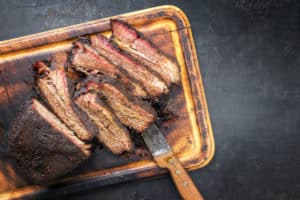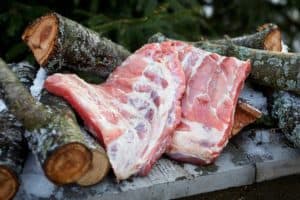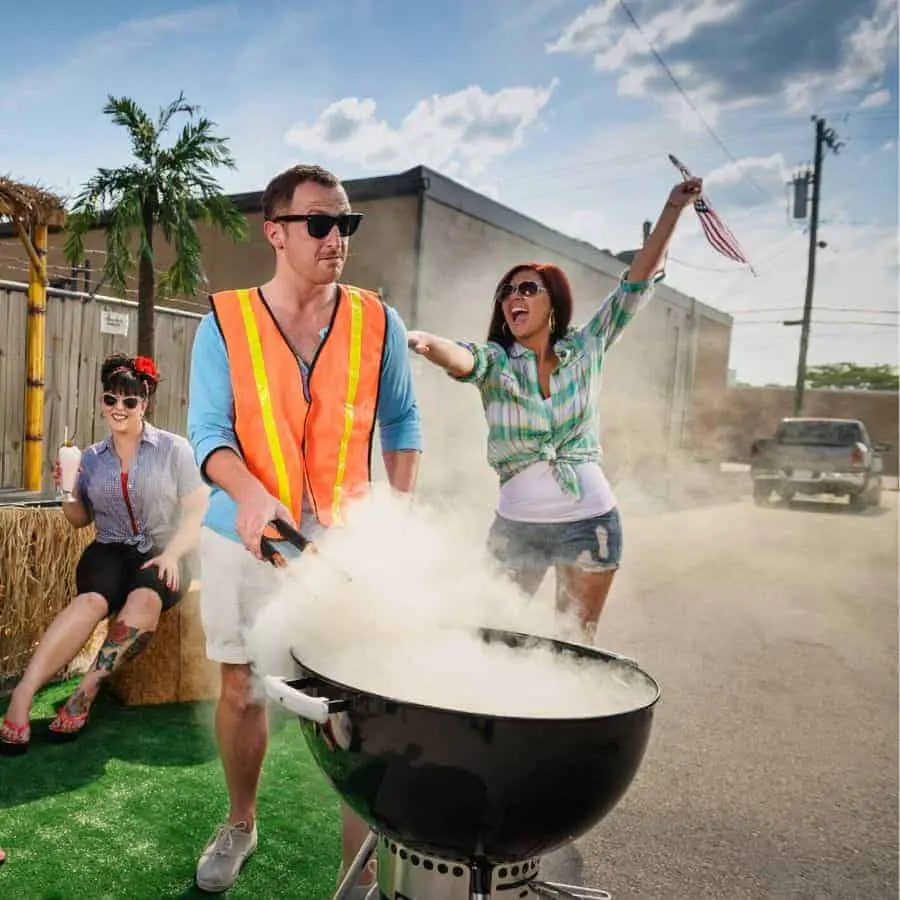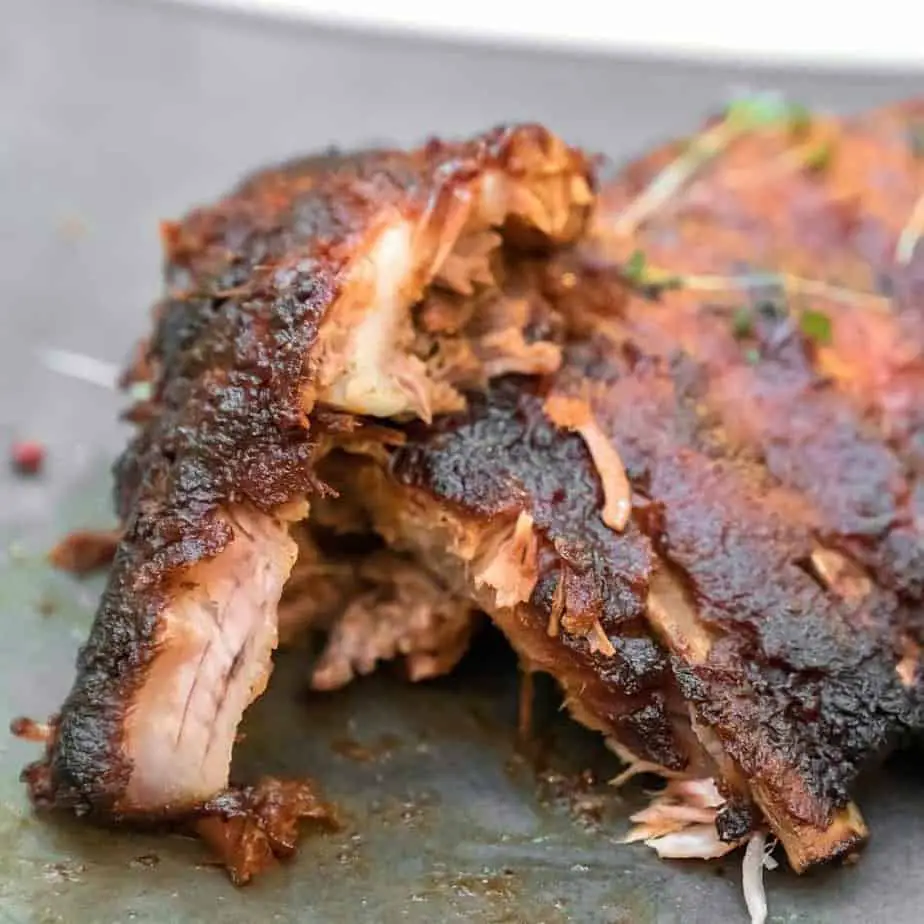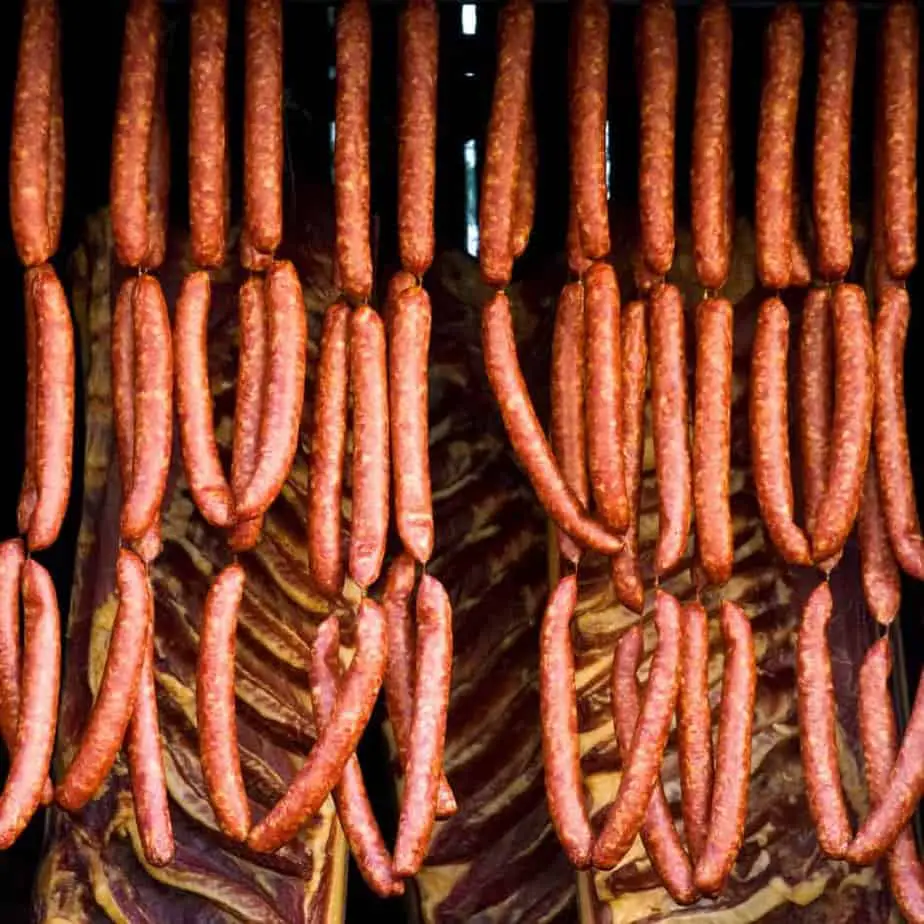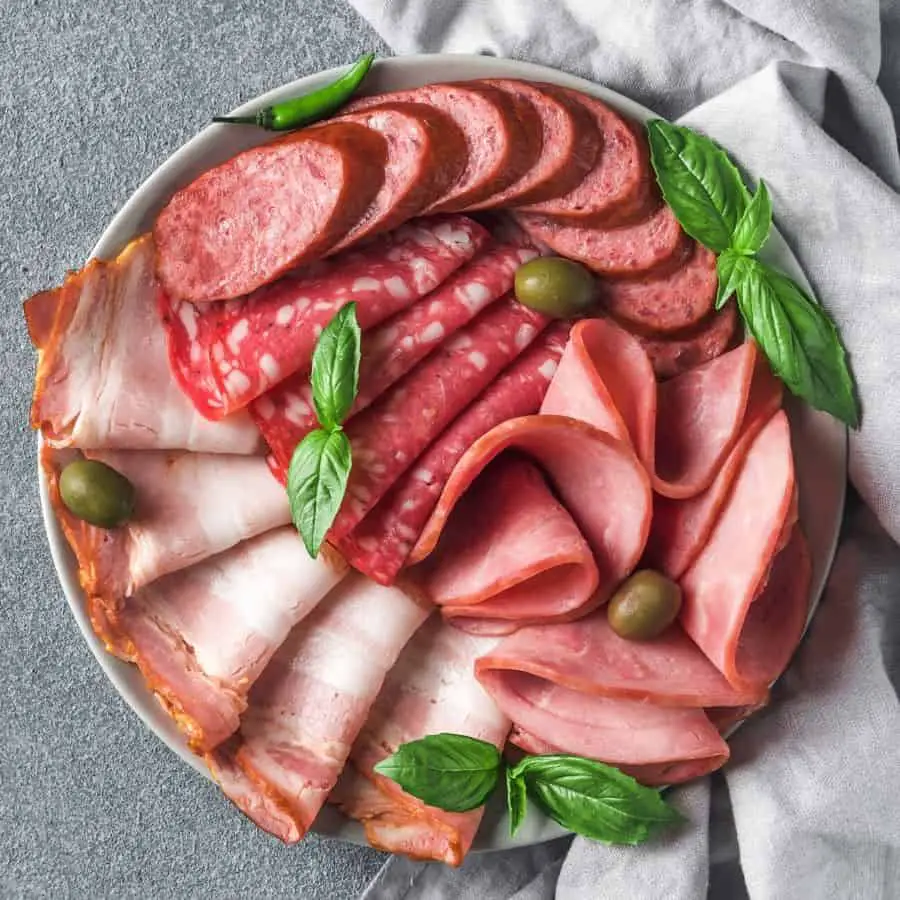How To Perfectly Smoke Pork Ribs on a Pellet Grill
Disclosure: This post may contain affiliate links. If you use these links to buy something we may earn a commission at not additional cost to you. Learn more.
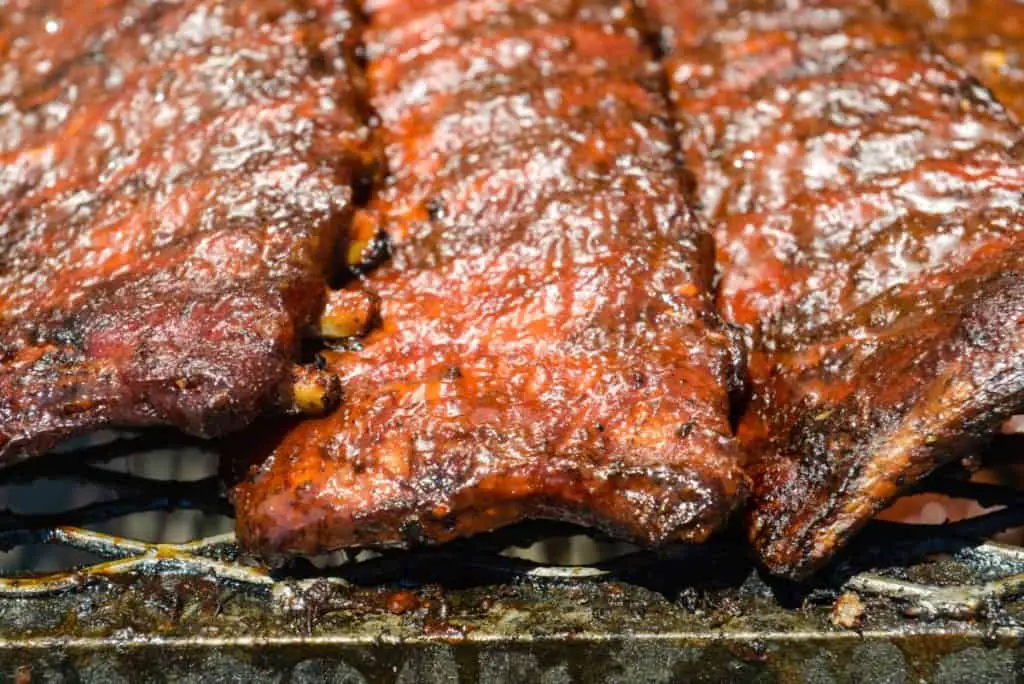
Whether the sun is out or the cold is present, smoked ribs may be a common choice for a great dinner. Perfectly smoked ribs may be dependent upon personal taste and texture preference, but it can be good to know a guideline for smoking them to that perfect state.
Smoking the perfect pork ribs requires the right amount of time, typically 5-6 hours, especially when using the 3-2-1 method. Adding plenty of seasoning and bastes will add to the overall flavor and may help add to the tender juice that the pork ribs need to satisfy.
Still have a few questions?. So let’s take a look at what the 3-2-1 method is and how to prepare to smoke perfect ribs.
General Preparation
The 3-2-1 method is known for being the best method to get the juiciest, most flavorful ribs. Before we get into what exactly the 3-2-1 method is, we’re going to go over some general tips that will help you improve your ribs, regardless of the method you are using to cook them. Remember, at the end of the day, it’s all about personal preference, so make sure you experiment to find the best way for you!
Peel The Membrane
All ribs will have a membrane along the back of the rib. This membrane lines the ribs to give additional protection to the animal’s vital organs. Unfortunately, that means that this is a thick membrane, and if left on the ribs, can be tough and hard to deal with. Chewing ribs with the membrane can make it tough and hard to eat. Plus the seasoning is lost in the membrane, keeping the flavor from integrating into the meat itself.
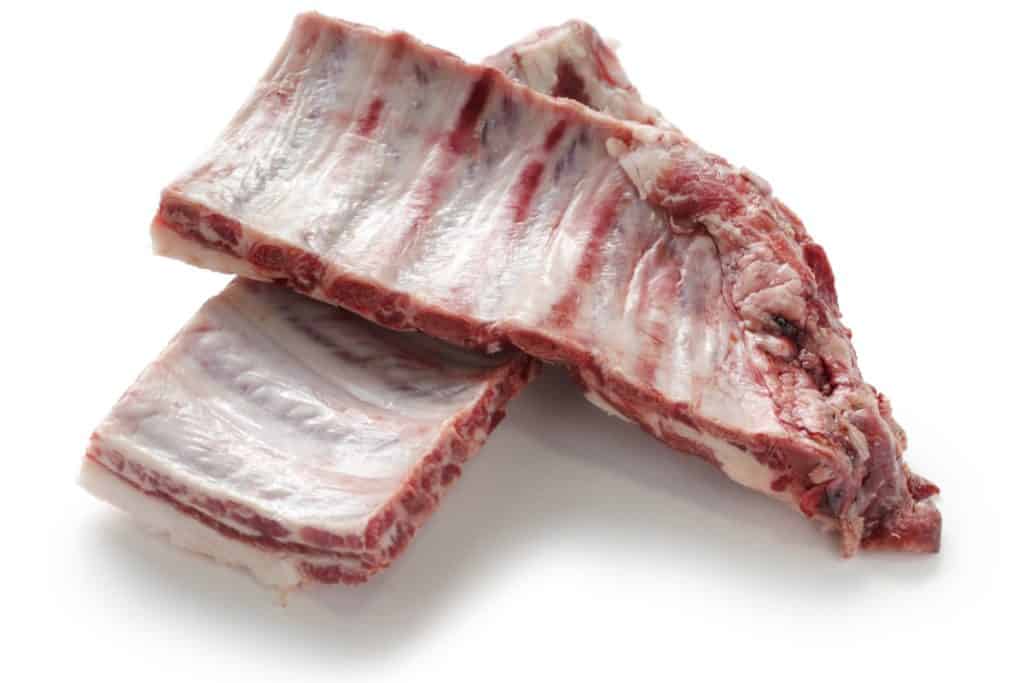
This membrane can be left on if you or your guests prefer to have a crunchier and chewier rib. But it is rather simple to take off and needs to be done before you do anything else. Simply take a knife to the membrane edge and lift it away from the meat and fat. This will give you a piece that you can use to get the rest of it off. By taking a paper towel in your hand and gripping the piece of the membrane that you just separated, you can then pull the rest of the membrane off.
The membrane will simply peel away from the rest of the meat, leaving the fat underneath and the meat exposed. By taking the membrane off, the seasoning will better soak into the meat, giving it much better flavoring than if you left it on. If you’re wanting that “tender meat falling off the bone” effect, you’re going to want to remove the membrane, since it will keep the meat stuck together.
Trim The Fat
The next step is also up to personal preference as your desired end taste is up to you. Some people really like the fat that can be found on pork ribs and consider a good amount of fat to be crucial to the perfect smoked ribs. Others will say that taking off most of the fat is the best way to go. The majority of people are fine with a moderate amount of fat left on the ribs.
This is typically the best and safest way to go when wishing to please with those perfect ribs. Leaving some fat on the meat will provide juice to the meat and give it better flavor allowing the perfect ribs to taste as they are called. If too much is taken off, it can detract from the ribs themselves, making your ribs drier than you might wish.
Seasoning
When it comes to seasoning, you get to start customizing your ribs to suit your specific tastes. If you’re not sure where to start, look up a few recipes to get a few ideas! A few of the more popular seasonings that typically find themselves on meat include-
- Salt
- Pepper
- Chili powder
- BBQ rub
- Onion powder
- Granulated Garlic Seasoning
All of these are good seasonings to stick to and mix. Like I said earlier you may decide to look up different seasonings and try out new flavors. But you can go wrong with some of those staples.
In addition to these dry ingredients, it can be a good idea to use a wet ingredient in the seasoning process. This allows for the seasoning that you add to adhere to the ribs themselves and soak into the meat. By doing this you can ensure that no dry ingredients will fall off in the smoking process. Here is a list of some typical wet ingredients to add to the meat.
- BBQ Sauce
- Mustard
- Vinegar
- Oil
These basic sauces not only help the seasonings stick to the meat, they add to the meat for a greater additional flavor.
When it comes to seasoning it is best to do so with time kept in mind. This means that seasoning the ribs hours before smoking them won’t help and may actually work against your overall flavor. It is best to take to seasoning your ribs no more than an hour before you want to start smoking the ribs. This will give a good time measurement for you to follow, plus you can take 30 minutes to each side of the ribs for the seasoning to adhere and give good flavor.
Start on the back of the ribs and put on your seasoning. Once that rub is on wait for 30 minutes before flipping it over and doing the meat side of the ribs. This will better prepare your meat to have the best flavor at the end of the process.
Heat The Pellet Grill
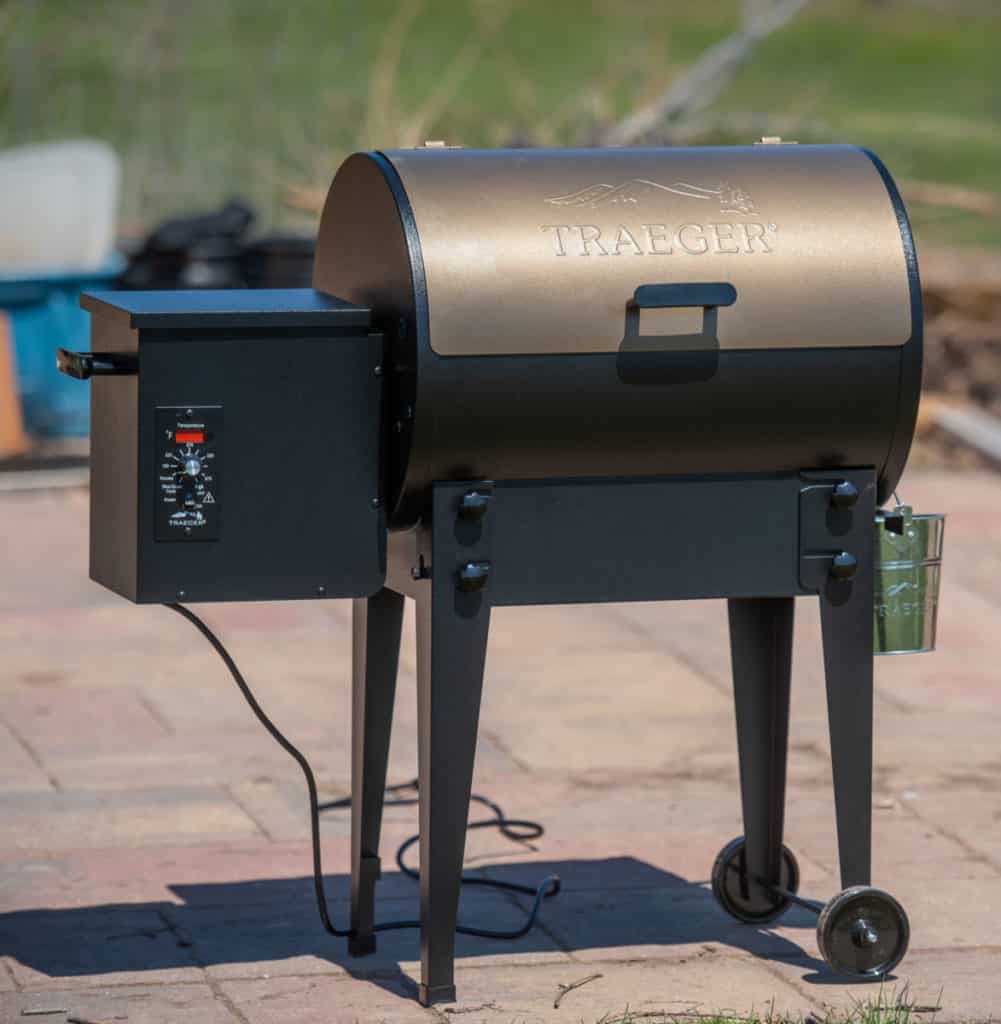
When it comes to heating the pellet grill, it is best to do this in between seasoning the back of the ribs and the front of the ribs. Just before it is time to start on the front it is a good idea to do this. It should take anywhere from 20 to 30 minutes to heat it.
It is best to heat it to a good 225 degrees Fahrenheit and to make sure that the smoke is in abundance. The smoke will give it extra flavor and the more the better. 225 degrees Fahrenheit is the best temperature to use specifically for the 3-2-1 method but can be modified according to the variations of the method you use.
A good average temperature sits around 225-235 degrees Fahrenheit, providing the best temperature to perfectly cook the meat. This keeps the juice within the meat and will lead to the meat falling right off of the bone.
Making A Baste
Also, it is a good idea to make a baste for the meat later in the smoking process. This baste should be prepared pretty close to when you want to use it. That time will be specified later as you keep reading.
But the baste itself will typically include melted butter with other ingredients ranging from brown sugar to mustard, and even vinegar and oil. This all depends on what you feel will go well with the seasonings that were already put on the meat and how it will cook into the flavor.
Bastes aren’t not hard to make and recipes can easily be found online. Here is a website with several different baste recipes:
https://www.thespruceeats.com/top-barbecue-mop-recipes-335476
The 3-2-1 Method
Now that we got all of that out of the way we can move onto the perfect smoking/cooking method that is used by many smokers when it comes to smoking ribs. This method wouldn’t be possible without all of the preparation and it will continue to come into effect as I explain this method.
But I would like to give a quote from a blog post off thebarbecuebible.com, advice from a griller and smoker of many years:
“…if you serve ribs cooked by the 3-2-1 method, 95 percent of the people who taste them react with delight and will declare you a barbecue genius. My guests sure did, and I did not deflect their praise.”
STEVEN RAICHLEN
The 3-2-1 method is, simply put, the most common and best method found to smoking the perfect ribs. It will leave the meat so tender that the bones will slide right out of place and the juices leftover will fill your mouth with enough flavor to imprint a memory on your taste buds.
This method has been used for many years, and if done correctly, the results will lead you to use it again and again for its appealing, perfectly smoked ribs.
The method itself is rather simple and refers to the time frame in which you should leave the ribs to smoke and in what environment the ribs should be in while those time frames are taking place.
Three
For the first part, the 3, refers to the first 3 hours that the ribs will be smoked. They will be at 225 degrees Fahrenheit and will not be wrapped in anything. This will give the meat a good long while for the seasoning to seep further into the meat and allow the flavor to start its journey to perfection. It also gives the smoke a chance to mix with that flavor. The whole purpose of using a pellet smoker is for that smoke flavor to become part of the meal.
Two
Once the first 3 hours are complete you will want to take the ribs out of the pellet grill and wrap them in tin foil before placing them back into the grill. When you wrap the ribs in the tin foil use the baste that was mentioned before and lather the ribs with it on both sides. This will give the ribs even more flavor and allow the ribs to keep from firmly sticking to the foil.
This time the ribs will be smoked for 2 hours at the same temperature. This will further allow the juices and flavor to become stronger and because the meat will be wrapped securely it will begin to tenderize. With the meat in the foil, it will further its process to becoming perfect.
One
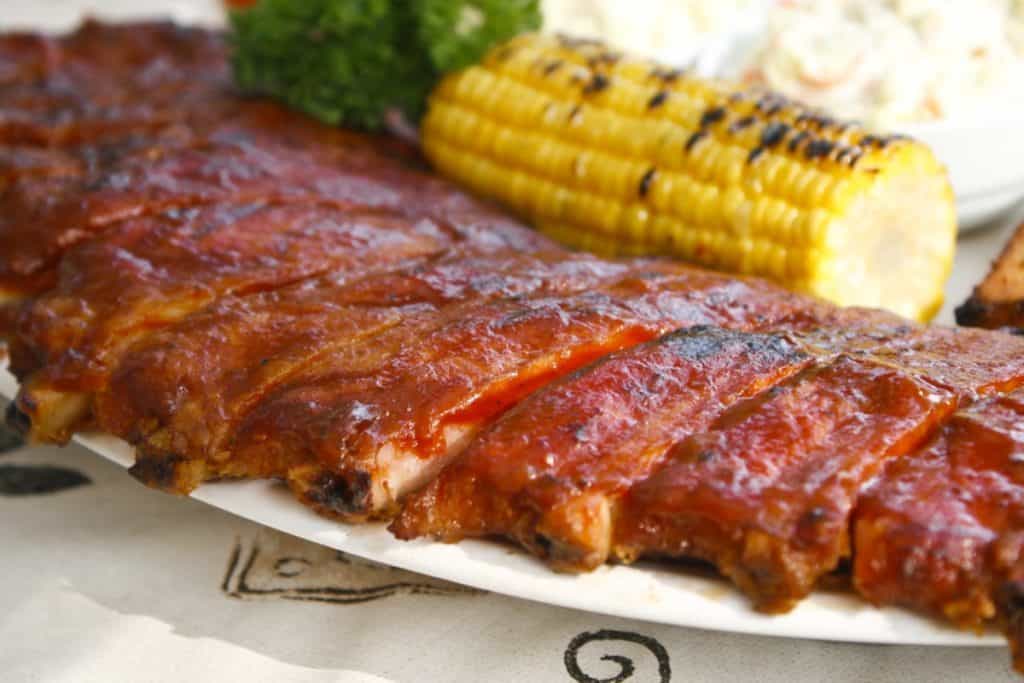
After 5 hours of smoking with additional time spent preparing the meat for the smoking process, you have come to the close, the last chapter, of this great journey. The final step is to take the ribs out of the tin foil and put them back in the grill at 225 degrees Fahrenheit for one hour to finish the cooking process.
This final step will give the ribs a nice bark to the final product and allow the meat to tenderize the rest of the way. Some people will add additional baste to this step as well.
This is the fabled 3-2-1 method that has been so evidently written about in this post. It is simple and sure as the guidelines lead to the perfect ribs, smoked precisely and accurately to burst forth with flavor and give a great experience and joy to the consumer.
When Are They Done?
After following the 3-2-1 method the smoking and cooking process should be done but if you are still concerned with knowing if the meat is done there are a couple of things that will indicate this. First off with the meat tender and juicy it will fall right off the bone. This means that the proteins have been cooked and broken down to a healthy temperature for consumption.
When the meat was originally put on the grill the bones were hidden under fat and meat. As the cooking process occurred the meat began to peel back from the bones, leaving a piece of the bones sticking out of one side of the ribs. This will give surefire evidence that the meat is done, ready to be eaten and enjoyed.


